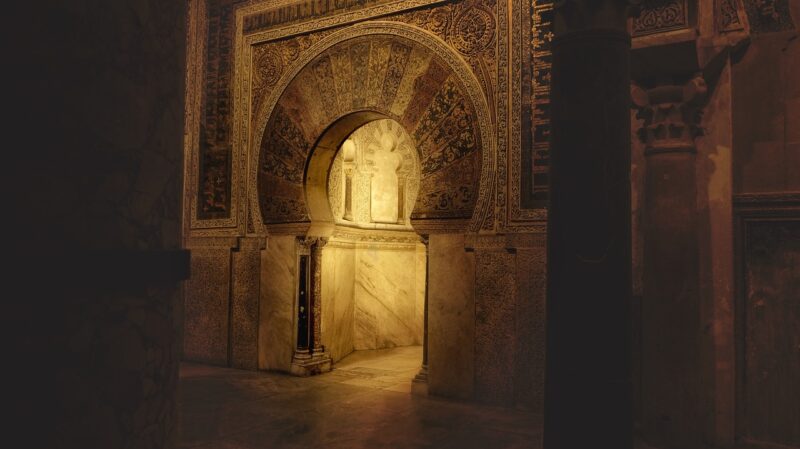The Evolution of Architecture: How Human Design Reflects Culture and Adaptation
November 12, 2024

Architecture is more than just the art and science of building; it is a reflection of the cultural, social, and environmental contexts of its time. From the grandiosity of ancient civilizations to the minimalist designs of modern architecture, the evolution of architecture tells a story of human adaptation and innovation. This article explores this evolution, examining how architecture responds to cultural shifts and the continuing influence of technology and the environment on our built spaces.
1. The Ancient World: Foundations of Architectural Evolution
The roots of architecture can be traced back to ancient civilizations, where the primary focus was on functionality and durability. The early structures were built using natural materials such as stone, wood, and clay. Here are some key architectural achievements from ancient cultures:
- Egyptian Architecture: The iconic pyramids of Giza, built around 2600 BC, showcased advanced engineering skills and were a testament to religious beliefs and the afterlife. The use of massive stone blocks and intricate hieroglyphs revealed the Egyptians’ reverence for their pharaohs and deities.
- Greek Architecture: The Greeks introduced the use of columns and designed structures like the Parthenon (completed in 432 BC) that reflected ideals of beauty and harmony. The three classical orders (Doric, Ionic, and Corinthian) set standards that continue to influence architecture today.
- Roman Architecture: The Romans enhanced earlier designs with innovations such as the arch, vault, and dome, leading to monumental structures like the Colosseum (completed in 80 AD) and aqueducts, demonstrating their engineering prowess and social organization.
These early structures not only provided shelter but also served as representations of power, cultural beliefs, and communal identity.
2. The Middle Ages: A Shift Towards Spirituality and Community
As the Roman Empire crumbled, architecture evolved to reflect the changing socio-political landscape. The Middle Ages saw the rise of feudalism and the significant influence of the Church on architecture.
- Gothic Architecture: This style emerged in the 12th century and continued into the 16th century, characterized by pointed arches, ribbed vaults, and flying buttresses. Notable examples include Notre-Dame Cathedral and Chartres Cathedral, which sought to inspire awe and elevate the human spirit toward the divine through their height and light-filled interiors.
- Romanesque Architecture: Preceding Gothic, Romanesque architecture featured thick walls, round arches, and small windows. Structures were generally fortress-like, reflecting a need for security during turbulent times and the prominence of monasteries as centers of learning and community.
The architecture of the Middle Ages not only reflected the dominant religious influences but also the importance of community, as cathedrals and castles served as gathering places and symbols of stability.
3. The Renaissance: A Return to Classical Ideals
The Renaissance period marked a revival of interest in classical antiquity, leading to renewed architectural styles that emphasized proportion, symmetry, and geometry. Key features included:
- Humanism: Architects began to focus on human experience in architecture, resulting in designs that were aesthetically pleasing and functional. This was a shift from the purely religious focus of the prior eras.
- Prominent Figures: Architects like Filippo Brunelleschi and Andrea Palladio reimagined building design. Brunelleschi’s dome for the Florence Cathedral exemplified innovation in architectural design, while Palladio’s villas incorporated elements of classicalGreek architecture, influencing designs in the Western world for centuries to come.
The Renaissance highlighted a blend of beauty and function, reflecting broader changes in societal values emphasizing individualism, science, and exploration.
4. The Industrial Revolution: Technology Transforms Architecture
The Industrial Revolution in the 18th and 19th centuries transformed not only the economy but also architectural practice. New materials such as steel and glass changed the way structures were conceived:
- Steel Frame Construction: This innovation allowed for the construction of skyscrapers, transforming city skylines. The Home Insurance Building in Chicago, completed in 1885, is often cited as the first skyscraper due to its steel frame and innovative design.
- Glass Architecture: With the advent of glass as a building material, architects like Joseph Paxton (Crystal Palace, 1851) experimented with light-filled structures that provided continuity between indoors and outdoors.
These advancements signified a shift from traditional, weighty construction to lighter, airy structures, mirroring the increasing pace of urban life and industrialization.
5. Modernism: Breaking from Tradition
In the 20th century, modern architecture emerged, challenging conventions and exploring new forms of expression:
- Functionalism: Modernist architects embraced the principle that form should follow function. The Bauhaus school, founded by Walter Gropius, highlighted simplicity and unity in design without decorative elements, focusing on rationality and functionality.
- International Style: Characterized by minimalism and an absence of ornamentation, this style produced iconic works such as Le Corbusier’s Villa Savoye and Ludwig Mies van der Rohe’s Farnsworth House, which incorporated open floor plans and large glass windows to break down barriers between space and surroundings.
Modern architecture reflects a society increasingly focused on technology, efficiency, and global connectivity, often mirroring the fast pace of life in urban environments.
6. Postmodernism and Beyond: A Celebration of Diversity and Context
The late 20th century gave rise to postmodernism, which reacted against the purity of modernism, celebrating diversity and context:
- Eclecticism: Postmodern architects embraced mixed styles, playful forms, and historical references. Buildings like Frank Gehry’s Guggenheim Museum in Bilbao showed that architecture could ignite emotion and provoke thoughts rather than conforming to strict functionalist ideas.
- Sustainability: The current phase in architecture emphasizes environmentally responsible design, integrating ecological principles into the planning stages. Structures like the Bullitt Center in Seattle exemplify this trend, showcasing solar power, green roofs, and efficient water use, creating buildings that coexist harmoniously with nature.
Today, architecture continues to evolve, reflecting ongoing cultural shifts and technological advancements that affect how we live and interact with our environment.
Conclusion: Architecture as an Ever-Evolving Art Form
The evolution of architecture mirrors the journey of humanity itself—reflecting our cultural values, technological advancements, and responses to environmental challenges. From ancient stone structures to modern eco-friendly designs, architecture encapsulates our desire for connection—with our surroundings, our history, and each other. As we face the challenges of the future, the evolution of architecture will undoubtedly continue, blending innovation with tradition, and ultimately defining the spaces where we live, work, and interact.
By understanding this evolution, we appreciate not only the structures around us but also the profound stories they tell about the societies that created them.







